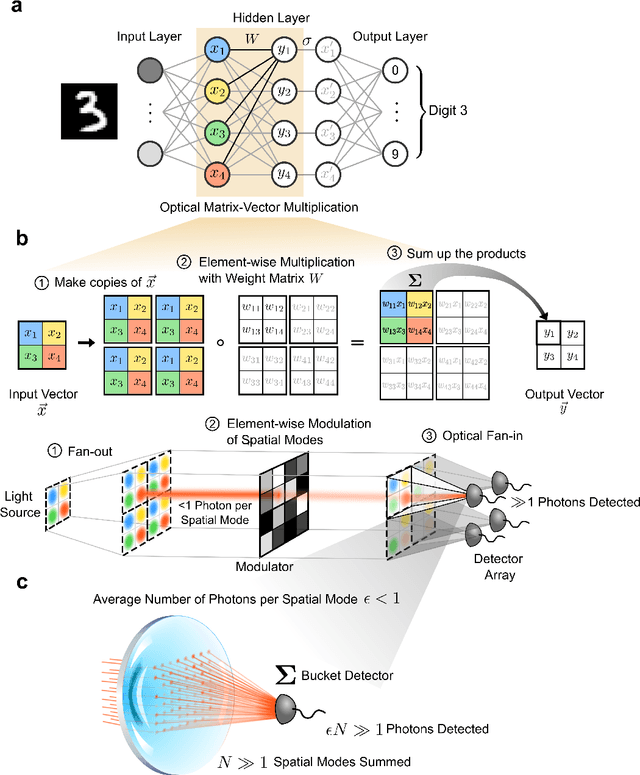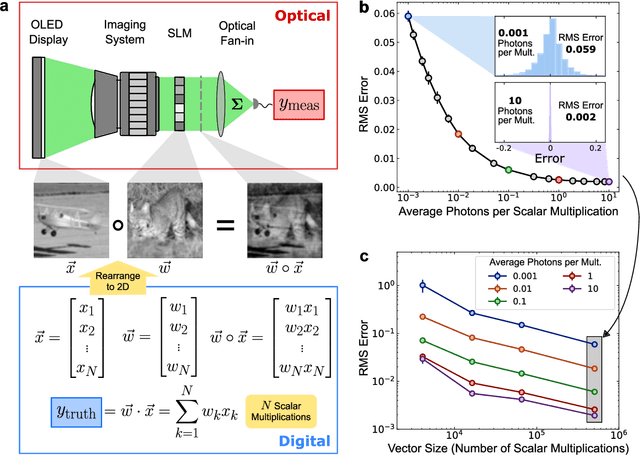An optical neural network using less than 1 photon per multiplication
Paper and Code
Apr 27, 2021

Deep learning has rapidly become a widespread tool in both scientific and commercial endeavors. Milestones of deep learning exceeding human performance have been achieved for a growing number of tasks over the past several years, across areas as diverse as game-playing, natural-language translation, and medical-image analysis. However, continued progress is increasingly hampered by the high energy costs associated with training and running deep neural networks on electronic processors. Optical neural networks have attracted attention as an alternative physical platform for deep learning, as it has been theoretically predicted that they can fundamentally achieve higher energy efficiency than neural networks deployed on conventional digital computers. Here, we experimentally demonstrate an optical neural network achieving 99% accuracy on handwritten-digit classification using ~3.2 detected photons per weight multiplication and ~90% accuracy using ~0.64 photons (~$2.4 \times 10^{-19}$ J of optical energy) per weight multiplication. This performance was achieved using a custom free-space optical processor that executes matrix-vector multiplications in a massively parallel fashion, with up to ~0.5 million scalar (weight) multiplications performed at the same time. Using commercially available optical components and standard neural-network training methods, we demonstrated that optical neural networks can operate near the standard quantum limit with extremely low optical powers and still achieve high accuracy. Our results provide a proof-of-principle for low-optical-power operation, and with careful system design including the surrounding electronics used for data storage and control, open up a path to realizing optical processors that require only $10^{-16}$ J total energy per scalar multiplication -- which is orders of magnitude more efficient than current digital processors.
 Add to Chrome
Add to Chrome Add to Firefox
Add to Firefox Add to Edge
Add to Edge